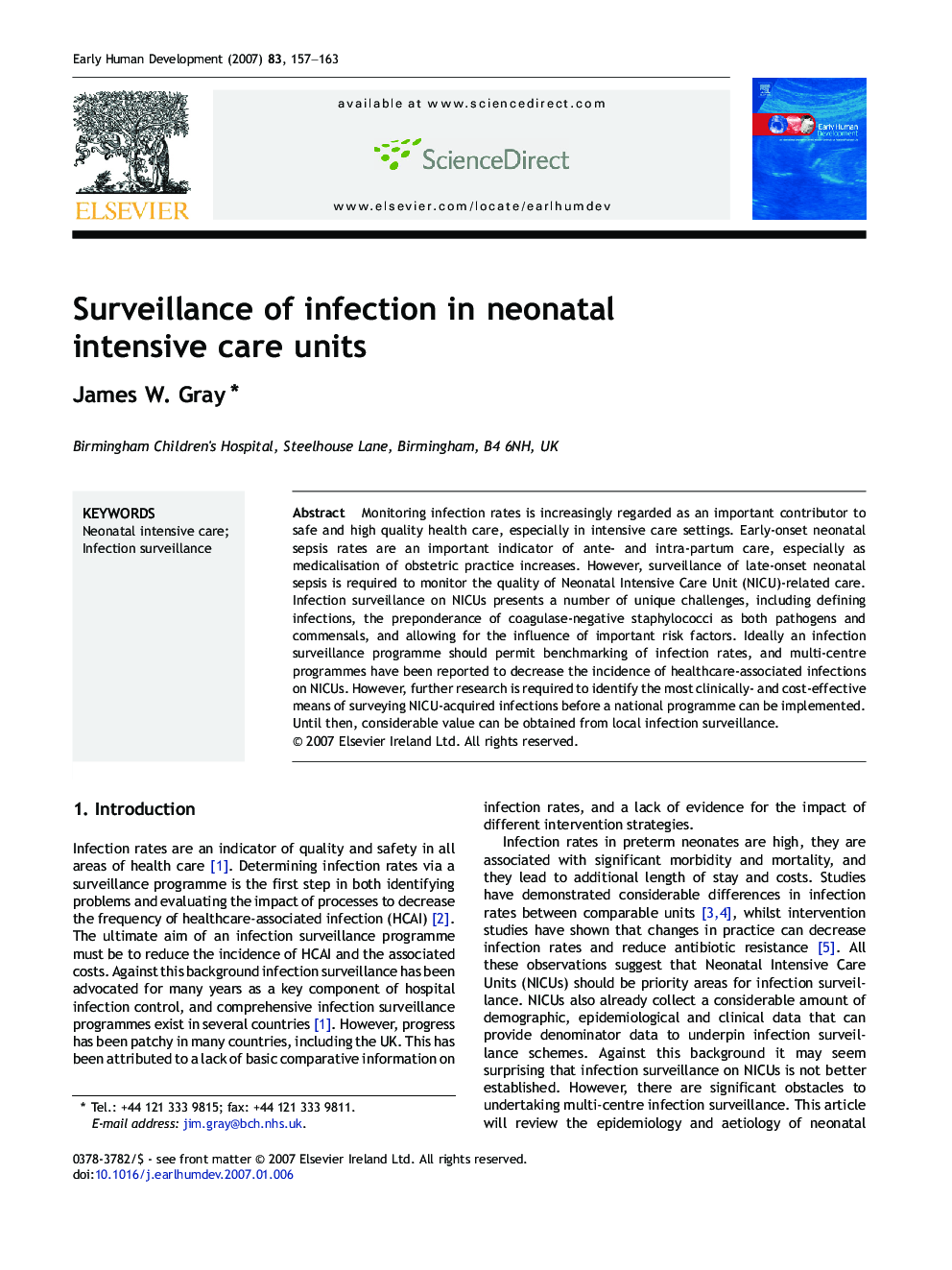| Article ID | Journal | Published Year | Pages | File Type |
|---|---|---|---|---|
| 3918629 | Early Human Development | 2007 | 7 Pages |
Monitoring infection rates is increasingly regarded as an important contributor to safe and high quality health care, especially in intensive care settings. Early-onset neonatal sepsis rates are an important indicator of ante- and intra-partum care, especially as medicalisation of obstetric practice increases. However, surveillance of late-onset neonatal sepsis is required to monitor the quality of Neonatal Intensive Care Unit (NICU)-related care. Infection surveillance on NICUs presents a number of unique challenges, including defining infections, the preponderance of coagulase-negative staphylococci as both pathogens and commensals, and allowing for the influence of important risk factors. Ideally an infection surveillance programme should permit benchmarking of infection rates, and multi-centre programmes have been reported to decrease the incidence of healthcare-associated infections on NICUs. However, further research is required to identify the most clinically- and cost-effective means of surveying NICU-acquired infections before a national programme can be implemented. Until then, considerable value can be obtained from local infection surveillance.
